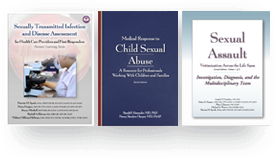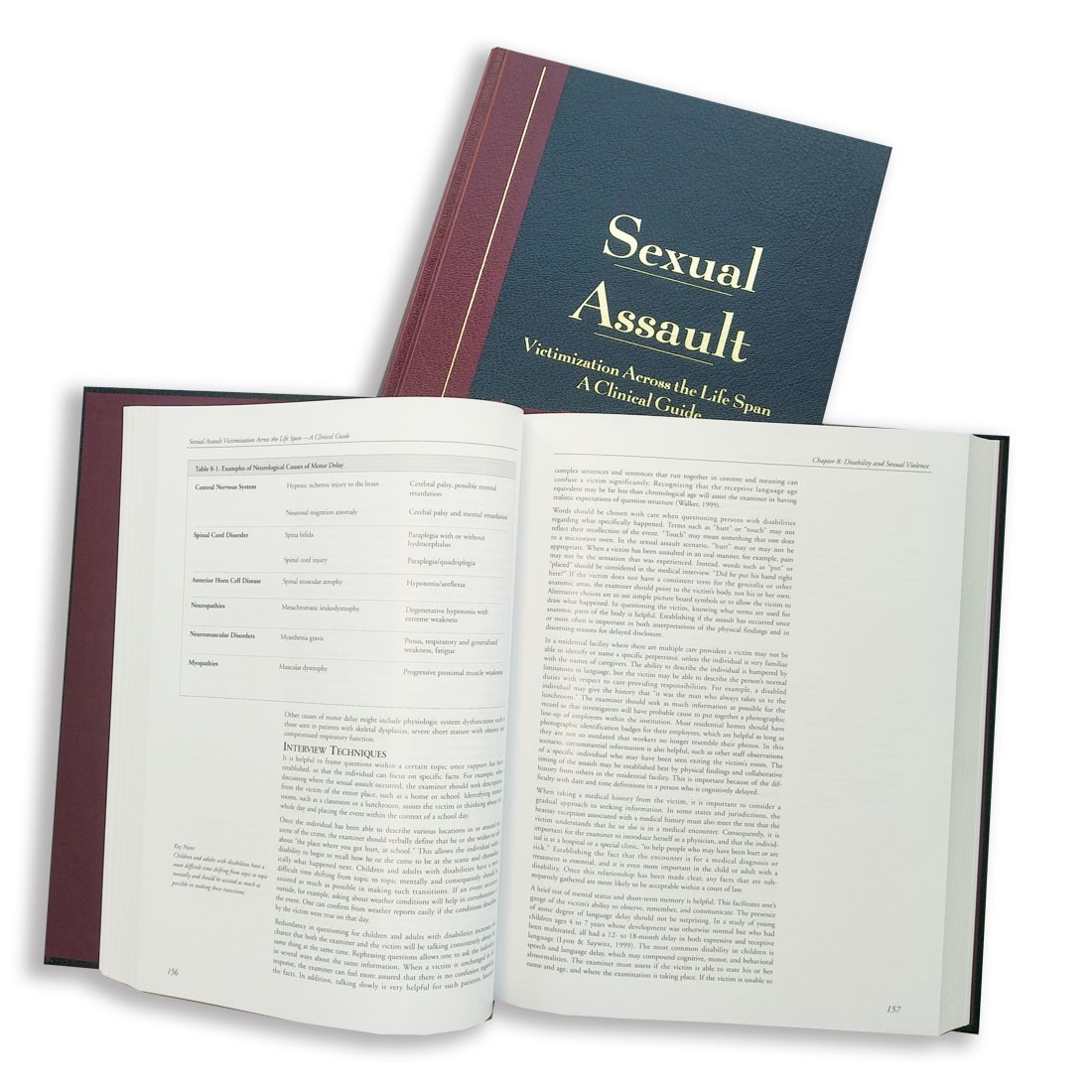From the Journal of the American Medical Association:
Sexual Assault: Victimization Across the Life Span is a two-volume collection. The mission of the publisher, GW Medical Publishing, is “to become the world leader in publishing and information services on child abuse, maltreatment and diseases, and domestic violence.”
The editors of the first volume, A Clinical Guide, are physicians with specialties in pediatrics, emergency medicine, and obstetrics-gynecology. Their goal is “to propagate information necessary to promote change, to better protect, and to better care for victims of sexual assault and sexual abuse.” The information contained is directed to all disciplines that provide care for victims and handle offender dispositions, including prehospital personnel, detectives, skilled medical staff, rape crisis counselors, and sexual assault examiners.
The editors of volume two, A Color Atlas, have backgrounds in pediatrics and forensic health care. The atlas has more than 1600 color photographic images. The chapters in the atlas are arranged by developmental stages: infancy, childhood, preadolescence, adolescence, adulthood, middle age, and elderly. The goal is to help “provide better care to victims of sexual violence and to hold offenders accountable to society for their crimes.”
The clinical guide has 32 chapters. The first 11 focus on child sexual abuse. Chapters start with an overview, then cover anatomy and the forensic evaluation. Separate chapters deal with male victims and persons with disabilities. Additional chapters address the teamwork approach to child sexual abuse, documentation, networks, and special technological tools.
Chapters 12 through 15 cover the evaluation of the adolescent and adult victims of sexual assault. The next two chapters give special attention to DNA evidence, sexually transmitted disease prophylaxis, and pregnancy prophylaxis. Outstanding features are the chapters on dating violence, acquaintance rape, domestic violence, and special populations (pregnant women, older adults, and incarcerated women). Chapters 23 and 24 explain the psychosocial trauma associated with sexual assault and offer resources for social support.
The editors include valuable information for maintaining health professional efficacy and for preventing and treating burnout. Vicarious traumatization is well defined and explained so that all sexual assault service professionals are able to understand their own potential sources of trauma.
The final chapters describe the history and development of Sexual Assault Nurse Examiner-Sexual Assault Response Team (SANE-SART) programs. These chapters discuss the roles of emergency medical services, law enforcement, investigating officers, and prosecutors and offer supportive direction to these disciplines.
These two volumes are a comprehensive and up-to-date collection on sexual assault with chapters by leaders in the field. Much of the information is evidence-based. The references are extensive and cover the gamut of the field. The editors have successfully included most of the important topics although additional attention could have been given to cultural issues and to recovery.
Reading the volumes has dramatically strengthened my understanding of the role of other members of the SART. In addition, the two volumes of Sexual Assault are an excellent teaching resource. The style and format make digesting the material uncomplicated. The language is concise and the content informative. I think the editors of both volumes have achieved the goal of disseminating practical evidence-based information for anyone working in the field of sexual assault and sexual abuse. I highly recommend these volumes for all who care for victims of sexual assault.













